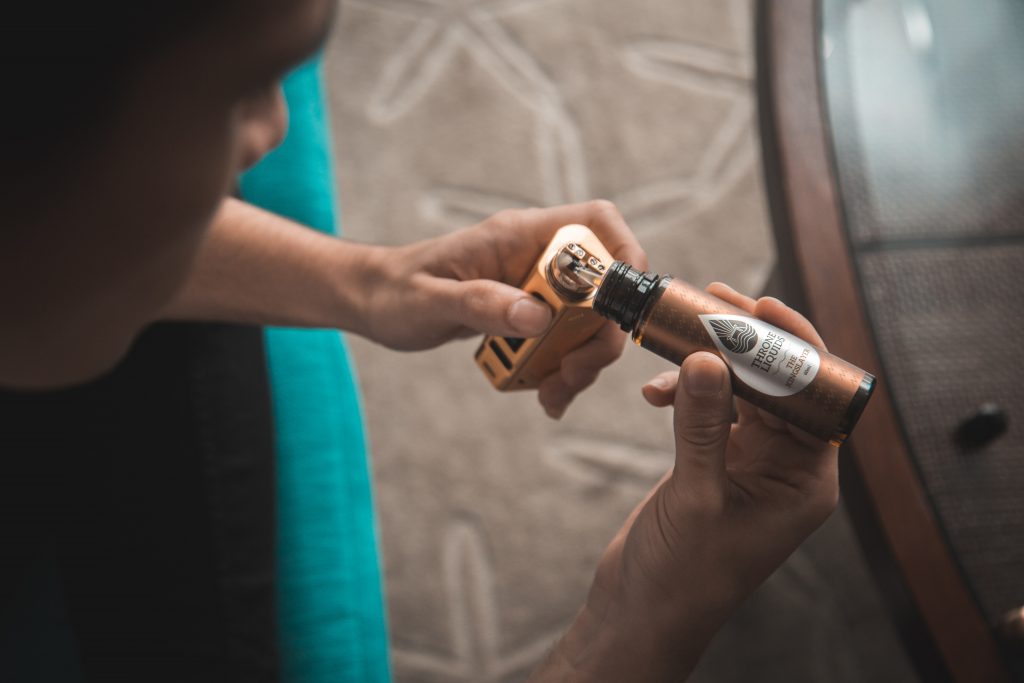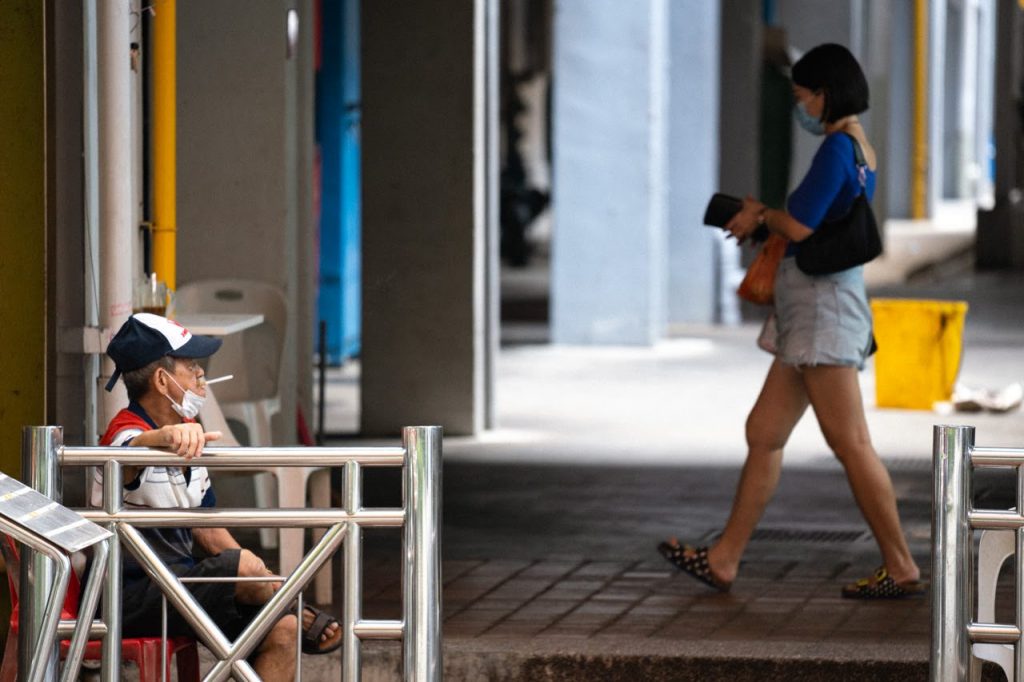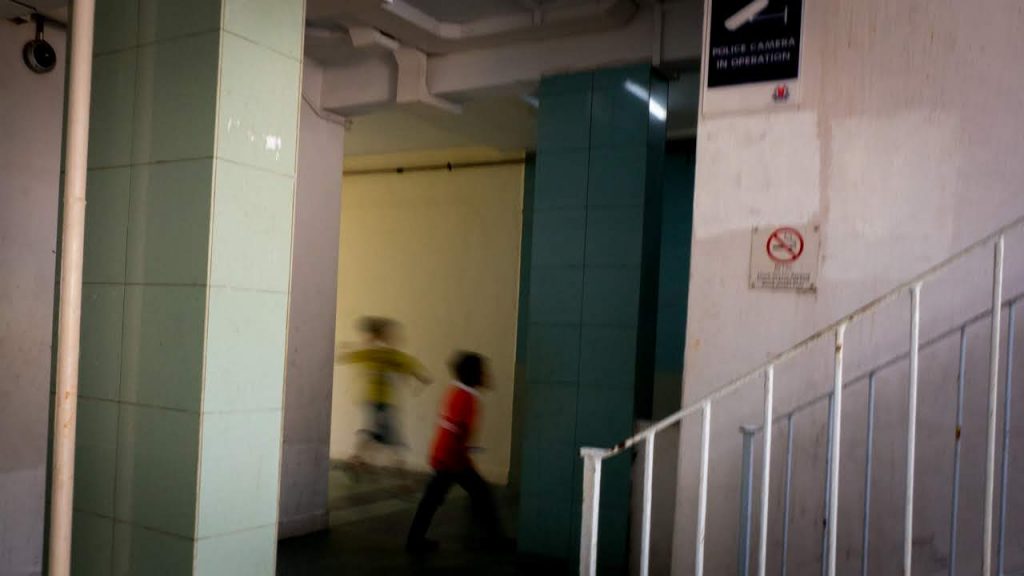Top Image: Ilyas Sholihyn / RICE File Photo
Singapore’s current ban on vaping has not worked the way it was intended. Illegal as it is, anyone can still get their electronic hit of nicotine. All it takes is some word-of-mouth and rudimentary tech-savviness.
By savviness, I mean signing up for a Telegram account.
In the discreet corners, back alleys and private parties across the country, it’s a vaping free-for-all. Hell, I even walked past someone openly vaping near Funan Mall’s smoking corner last week. As if vaping at a designated smoking point negates the fact that the activity is illegal here.
Things are different in New Zealand. Vapes are regulated but still allowed—only to be sold at specialist retail stores and subject to the slew of safety regulations of the country.
Regulated vapes are part of the country’s bid to be smoke-free by 2025. This is defined as less than 5 percent of daily smokers across all population groups in the country.
As someone whose father was once a chain smoker and is now in the midst of kicking the habit, I was curious to learn whether Singapore could follow in New Zealand’s footsteps. Especially when smoking is a vice deeply entrenched in older generations.
A public health leadership dialogue titled ‘Creating A Smokefree Future’ seems like a good place to start.
The keynote speaker for the dialogue? Hon Dr Ayesha Verrall, New Zealand’s Minister for COVID-19, Research, Science, and Innovation. The same minister who explained how vaping plays a big role in helping New Zealand quit tobacco for good.
A Smoking Ban for a Lung Time
New Zealand’s smoke-free future is an ambitious goal. But not without an equally comprehensive action plan.
The country set a historic precedent on regulating smoked tobacco products when it announced the cohort ban on smoking—New Zealand residents aged 14 and under in 2027 will never be legally allowed to buy cigarettes in their lifetime.
Cohort ban aside, the feasibility of the country’s goal rests on its ability to reduce the number of daily smokers in the country. After all, a ban is preventative in nature. It can only do so much to achieve a smoke-free environment by 2025.
Other tactics in New Zealand’s smoke-free action plan include reducing the addictiveness of cigarettes by reducing nicotine levels and offering less harmful alternatives for smokers. Like vapes.

Vaping in New Zealand
I settled into a discreet corner of the auditorium. Much to my surprise, it’s packed with students—surprising for a Tuesday afternoon at the tail end of an academic semester.
“Treatment and nicotine replacement are widely available (in New Zealand), including the regulated availability of vapes in retail stores,” Dr Verrall explains in her keynote address as she details the road ahead towards her country’s smoke-free future.
The dialogue held on Oct 11 also featured panellists like Dr Koong Heng Nung, the veteran lung surgeon leading the charge against both smoking and vaping here.
Evidently, vaping remains controversial in Singapore. Dr Verrall’s cursory mention of vapes stirs the audience. Three separate questions are immediately raised on the viability of these devices in Singapore.
One contended that vapes had no place in the country because of the lack of scientific evidence around the usage of such devices. The other two questioned whether vapes are a viable way for Singapore to achieve its own smoke-free future.
Everyone knows that possessing, purchasing and using vapes are illegal here. And yet, that hasn’t deterred the demand for these devices. Health Sciences Authority (HSA) handled 7,593 vape cases in 2021. It’s a stark increase from the 2,477 cases in 2019.
Of course, these are officially recorded illegal uses of vapes. Due to the prohibition, there is no data available on exactly how much of Singapore’s population are vaping.

No Smoking Gun, Yet
The difference between the two countries’ approach to vaping lies in the lingering uncertainty around vaping’s long-term health effects. Where New Zealand goes for harm reduction, Singapore goes for harm eradication.
“Tobacco is the leading cause of preventable death in New Zealand. And I’ve been advised that the harms of vaping are not anywhere near the harms of tobacco,” Dr Verrall offers in response to the barrage of questions about New Zealand’s stance on vaping.
Whether vaping is indeed relatively less harmful than cigarettes is still up for heated debate among the global medical science community. It’s evident from the question that directly disagreed with Dr Verrall. In fact, it posited that the harms of vaping are equally, if not more, nefarious than smoked tobacco products.
Dr Derrick Heng, Group Director of the Public Health Group at Singapore’s Ministry of Health, chimes in and points out why Singapore banned vaping in the first place.
“All these are country specific contexts. We’re fortunate enough that we had a ban on vaping right from the beginning.”
“People often say, ‘Why are cigarettes a legal product?’ Well, if they were a new product, they would never be allowed in the market,” Dr Heng declares.
“We’ve taken that argument and applied it to vapes here.”

No Smoke Without Fire
Critics might imagine that folks young and old in New Zealand are freely buying e-cigarettes and blowing out clouds of flavoured mist on the streets. But vaping in New Zealand is not an activity that exists without regulation.
Devices are only sold at specialist stores and vaping products need to meet safety standards before they reach storefronts.
With Singapore’s vaping ban, devices illegally obtained through Telegram black markets that reach the hands of consumers are not subjected to the same regulatory scrutiny.
Objectively, this should be worrying because of the seemingly growing number of vape users in Singapore. Buyers simply have no way to ascertain the safety of the vape products they use, and place implicit trust on their shady dealers.
This is the very reason Dr Verall gives when explaining the regulation of vapes in New Zealand. “To further these [regulated vape] measures means that those who continue to smoke will not be driven into criminal networks to sustain their addiction.”
As of now, vape users in Singapore continue to turn to these same illegal networks for their vaping liquid pods and devices—ones that continue to be free from regulatory review.
The prevailing stance is that if someone goes out of their way to obtain a vaping device illegally, then they deserve what’s coming to them. Even if they hurt themselves.
But some might argue that this is precisely the kind of isolated view that hurts efforts to help smokers or people who suffer from addiction.

To Eradicate Harm
“I think at our highest level, our principle is one of having risk-proportionate regulation,” Dr Ayesha expounds. “We think that vaping should be there to support people to quit.”
She prefaces this with a disclaimer that some regulations must be recalibrated to ensure that New Zealand’s youth are not picking up vaping as a primary habit. A 2021 survey found that nearly 20 percent of New Zealand’s students do have a vaping habit.
With the vaping ban in Singapore, the ideal scenario is that youth aren’t getting their hands on these devices in the first place to prevent addiction.
However, it is difficult to find out the data on exactly how much of Singapore’s youth are addicted to vaping. It is remarkably easy to acquire one, illegal or otherwise. Vapers here often speak of its easy process, as if making an online purchase. They even deliver to your house!
One has to admit: In trying to eradicate the harms of vaping completely via prohibition, a new kind of harm is created for Singaporean vapers.
According to Dr Verrall, regulation around vapes is intended to protect youth who might turn to criminal black markets to purchase these devices. The same can be considered for vapers in Singapore who put themselves at risk with things that are left unchecked by stringent safety standards.
Despite the differing views on vaping, what the panel looked ahead to is the same: A future without cigarettes. For us to effectively achieve that goal, perhaps more thought could be given to how we treat our smokers and vapers today.
The road towards a smoke-free future in Singapore is not one that solely consists of bans and taxes. To be fair, Singapore’s approach involves public education and counselling on top of legislation and enforcement.
In fact, according to the panel, the importance of Singapore’s smoke-free future lies in informal education—mobilising youth to educate each other on the harms of smoking and vaping. Public education with a human touch.
Just like the long-term effects of vaping, only time will tell about the damage from full-blown prohibition. There’s always a limit to Singapore’s social compact, and that applies even to the laws that govern us in a strictly smokeless vacuum.






